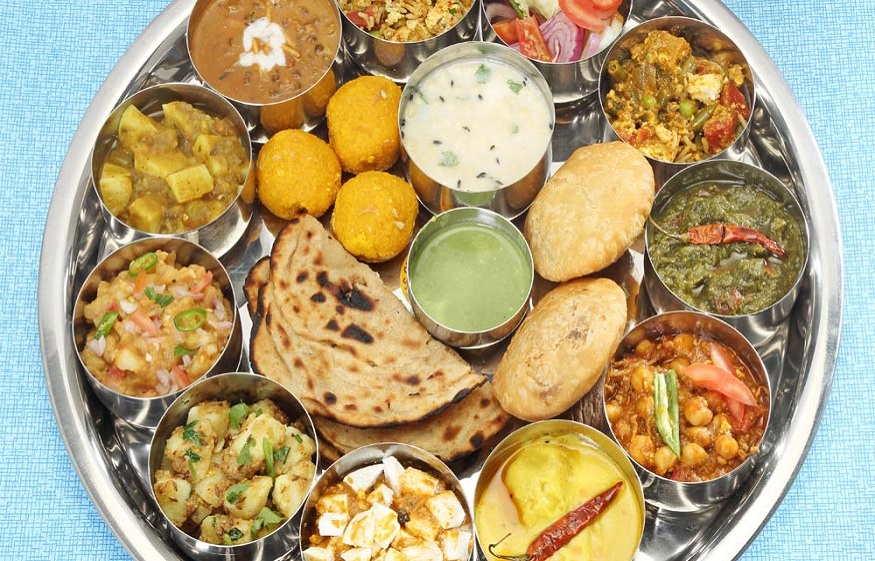Haleem – A Hearty and Slow-Cooked Dish from Indian Regional Cuisine

Quick Summary
Feel the depth of tradition in every spoonful of Haleem. This slow-cooked delicacy blends grains, lentils, meat, and spices into a dish full of warmth and comfort. It satisfies hunger, nourishes the soul, and brings generations together. Crafted with patience, Haleem turns everyday ingredients into something bold, hearty, and unforgettable.
Deep Dive
Tired of boring meals that leave you unsatisfied? Try something rich, warm, and deeply comforting. Meet Haleem. This dish simmers for hours, building bold flavours slowly. It’s thick, filling, and packed with protein. You’ll find it in the heart of Indian regional cuisine. Every bite tells a story of spices, lentils, and tender meat. Craving real comfort food? Stop searching. Let Haleem take over your plate and your taste buds.
What is Haleem?
Haleem isn’t your everyday stew. It’s thick, rich, and deeply satisfying. This slow-cooked delicacy blends grains, lentils, spices, and meat into one hearty bowl. Every spoonful bursts with flavour and warmth. Originating in the Middle East, it travelled centuries ago to India.
Cities like Hyderabad embraced it and made it their own. Today, food lovers across India crave its comforting taste. You’ll often find it during festive seasons. But its appeal lasts well beyond those days.
Haleem Recipe
Cooking Haleem takes time and patience. But the result feels worth every minute. You don’t need fancy tools, just strong flavours and slow heat.
Ingredients:
- 500g mutton or chicken (boneless, chopped)
- ½ cup broken wheat (soaked)
- ¼ cup lentils (mix of urad, chana, and masoor)
- 2 onions (sliced)
- 1 tbsp ginger-garlic paste
- 1 tsp turmeric
- 1 tsp chilli powder
- 1 tsp garam masala
- Ghee or oil for frying
- Salt to taste
- Water or stock for cooking
Steps:
- Cook meat with turmeric, salt, and water until tender.
- Boil soaked wheat and lentils separately.
- Fry onions until golden. Keep half aside for garnish.
- Combine meat, grains, lentils, and spices.
- Mash or blend the mix for a creamy texture.
- Simmer gently, stirring often to avoid burning.
- Add fried onions and a splash of ghee at the end.
Five Mouth-Watering Haleem Styles to Try at Home
Haleem isn’t limited to just one flavour. Its base allows for exciting changes, depending on what you’re craving. You can enjoy it spicy, mild, meaty, or even vegetarian.
Here are five standout variations you can make at home:
- Hyderabadi Mutton Haleem: Bold and spiced with saffron, this version stands out during Ramadan. Use slow-cooked mutton with generous ghee and serve it hot.
- Chicken Haleem with Green Chillies: Use boneless chicken, green chillies, and mint for a lighter but fiery option. Add lemon juice before serving for a zesty finish.
- Vegetarian Haleem with Soya and Nuts: Skip the meat. Use soya chunks, almonds, and cashews for depth. It still offers protein and texture but feels lighter on the stomach.
- Kolkata Haleem with Broken Rice: Swap out wheat with rice and go heavy on cinnamon and cloves. This East Indian style has a sweet undertone and a thicker texture.
- Lentil-Rich Haleem with Coconut Milk: Add richness with moong dal and coconut milk. It creates a mild, creamy taste. Ideal for those avoiding spice.
Each twist brings something new, yet keeps the core essence of Haleem intact. With every version, you get comfort and a full belly.
Cultural Significance of Haleem
Haleem isn’t just food. It’s an emotion. It holds cultural value that runs deeper than its recipe. Hyderabad, in particular, celebrates this dish during Ramadan. But its reach has spread far beyond one community or occasion. People from different backgrounds now share a plate of Haleem together.
You’ll find it at street stalls, in family kitchens, and even in high-end restaurants. During festivals, queues stretch long outside Haleem counters. It’s a symbol of unity and warmth. Across regions, people tweak its recipe to match local taste but keep the spirit intact.
From old Hyderabad alleys to Mumbai rooftops, Haleem connects people. It tells a story of migration, adaptation, and love for food. That’s what makes it more than a meal. It becomes a memory shared over time. While it belongs to history, it continues to thrive in today’s busy kitchens and hearts.
Why You Can’t Rush a Good Haleem
The beauty of Haleem lies in how long it takes. You can’t fast-track it. You have to soak the grains, boil the lentils, slow-cook the meat, and stir for hours. This slow burn unlocks deep layers of flavour. Every ingredient breaks down, blends, and forms something new.
Fast food doesn’t deliver this level of comfort. In a world of quick fixes, Haleem reminds you to pause. It rewards patience. Even the aroma builds slowly, teasing your senses before the first bite. The longer you wait, the better it gets.
Many home cooks prepare it overnight, letting the pot bubble quietly. They stir between chores or prayers. They check the texture and adjust seasoning without hurry. The result? A silky, rich dish you’ll never forget.
Next time you eat Haleem, notice how each bite tells a story. Not just of spices and meat, but of care, time, and tradition.
How Regional Ingredients Shape Haleem
While Haleem has Persian roots, the Indian version adapts beautifully to local taste. From turmeric to tamarind, every area adds its own twist. In Hyderabad, you’ll find a saffron-rich version topped with fried onions and ghee. Move west, and cooks in Gujarat might use broken rice instead of wheat.
In Tamil Nadu, chefs may add curry leaves and use coconut oil for a South Indian touch. Up north, haleem gets paired with naan instead of rice. Even the meat varies—some regions prefer goat, others lean toward chicken or even beef in certain communities.
This flexibility makes Haleem a beautiful example of how food travels and evolves. The base remains, but the identity changes. That’s the charm of regional recipes. It welcomes adaptation without losing authenticity.
Next time you try Haleem in a new city, don’t compare. Instead, explore. Let the spices surprise you. That’s the real magic of this dish.
Let Haleem Warm More Than Just Your Plate
Haleem offers more than taste—it delivers comfort, culture, and connection. Every slow-cooked bowl brings people together and tells a rich story. Whether you cook it at home or enjoy it on a festive street, it never disappoints. Don’t wait for an occasion. Make space for Haleem in your everyday table. One spoon, and you’ll know—it’s not just food, it’s tradition served hot.









